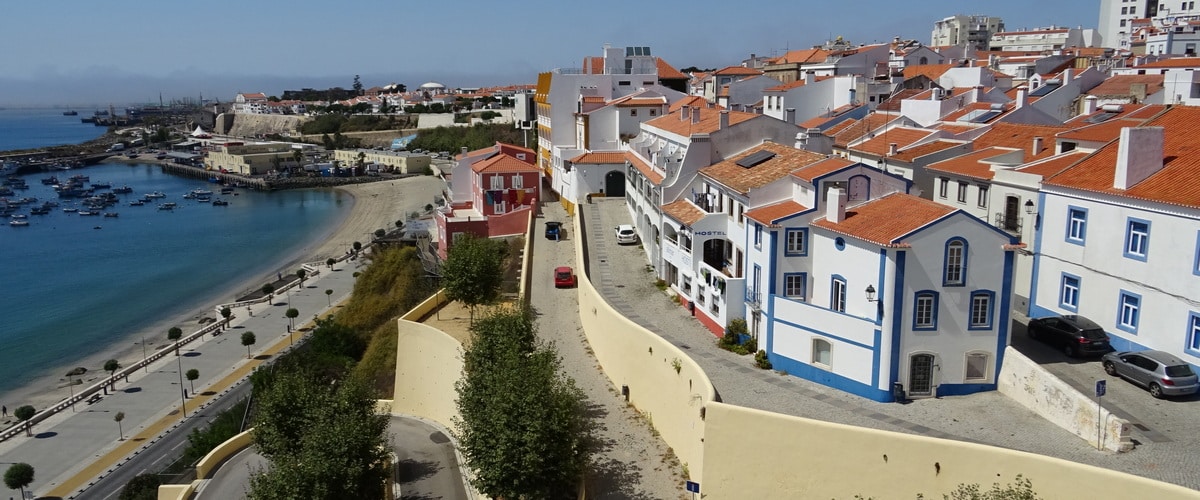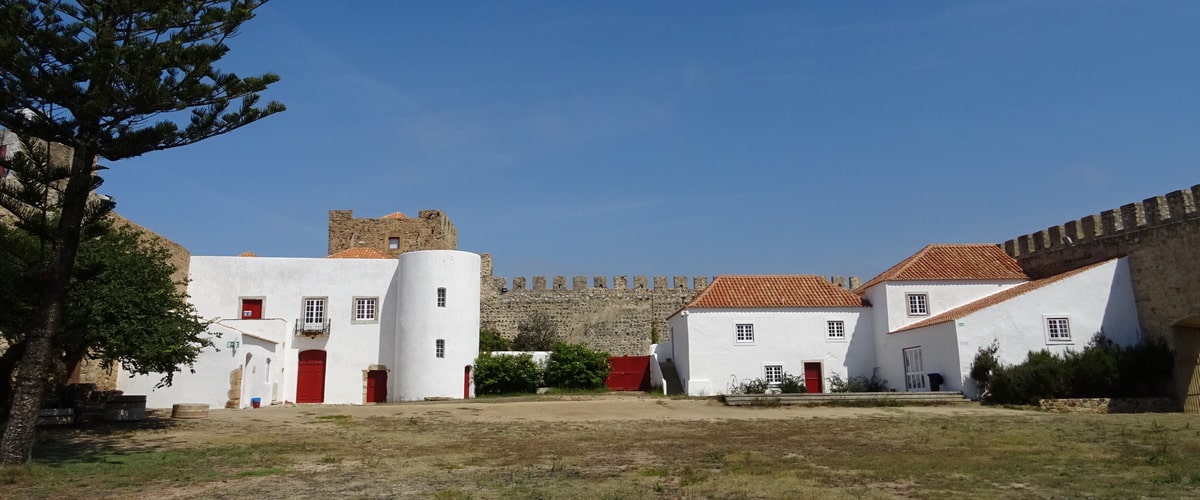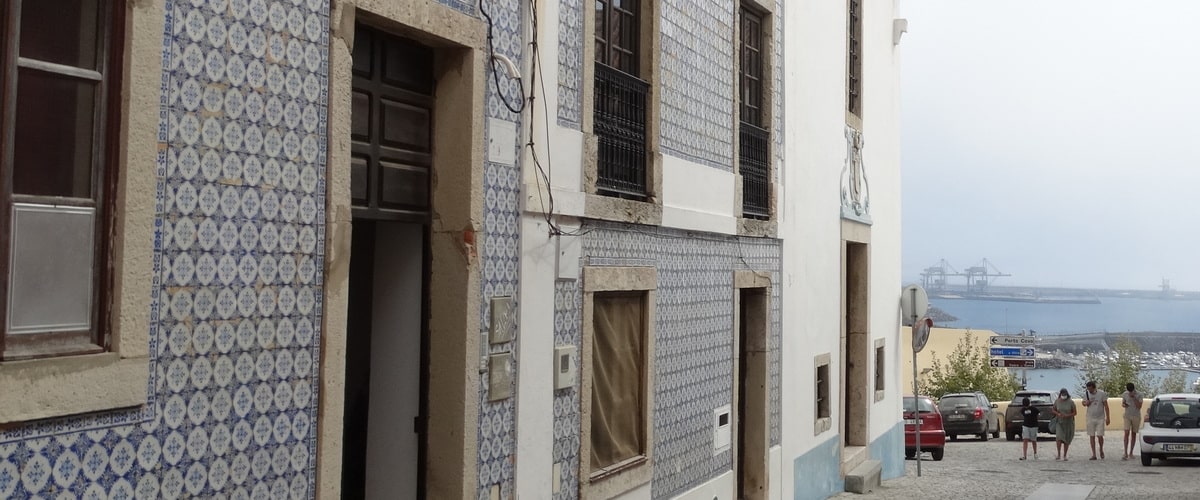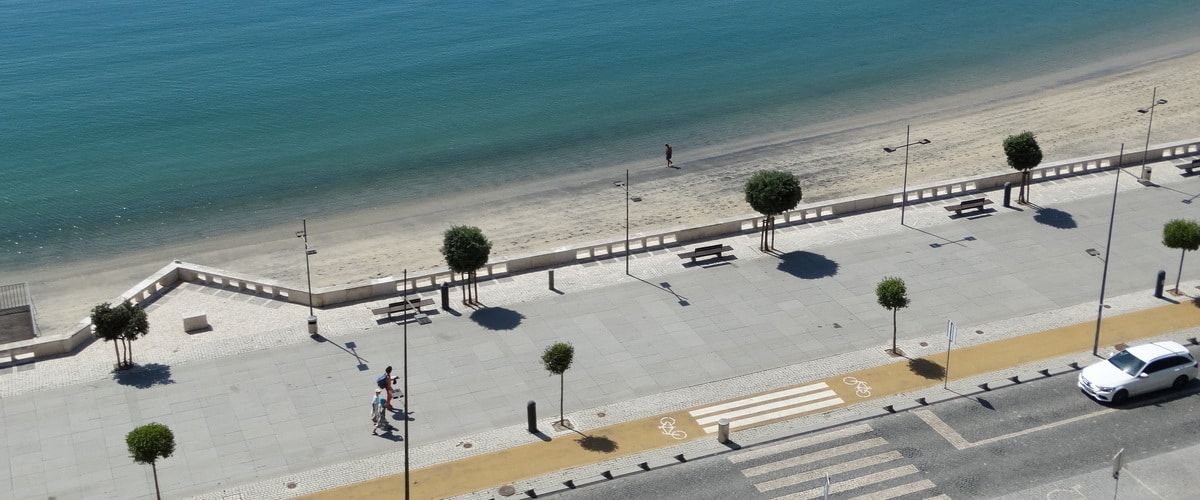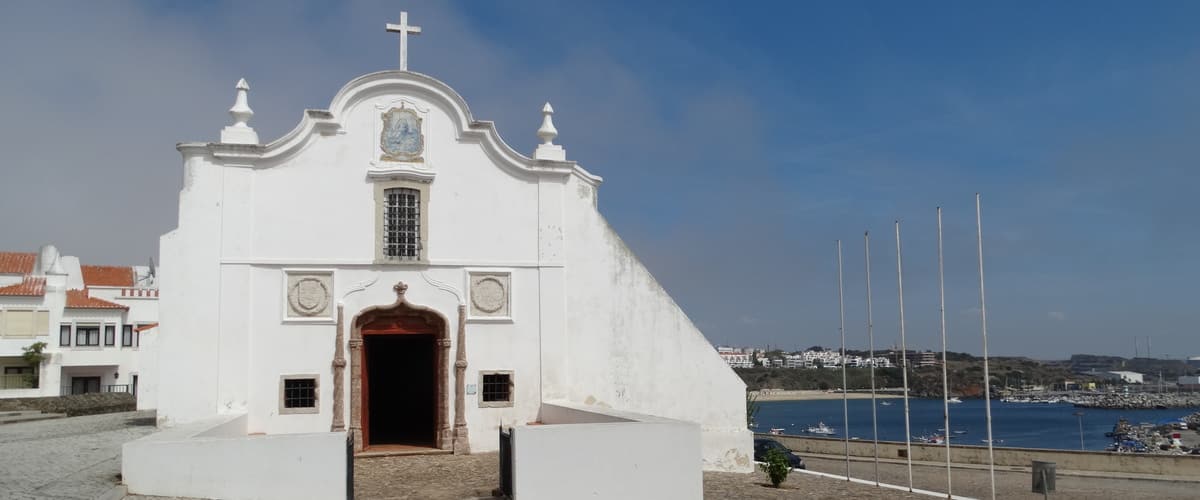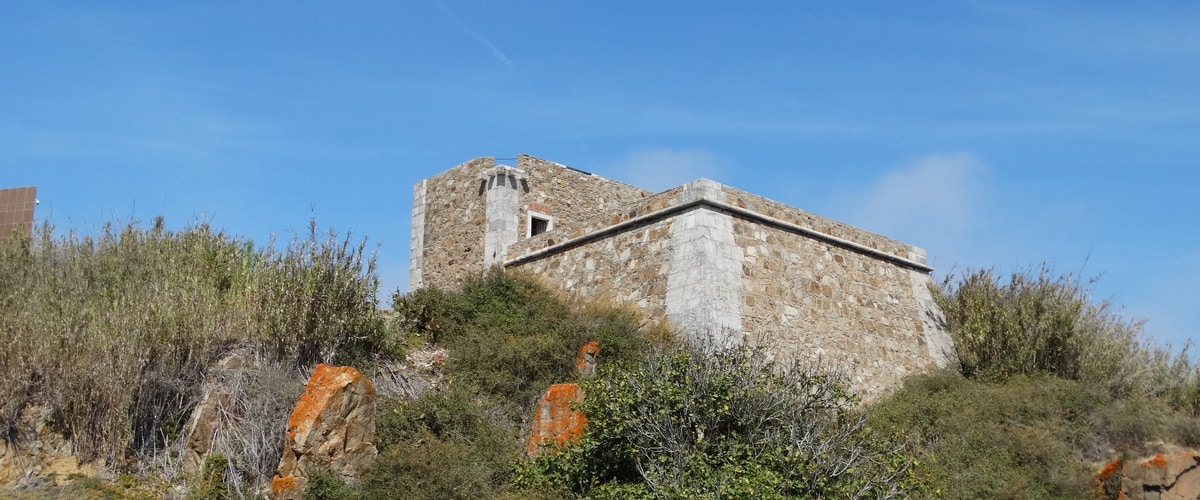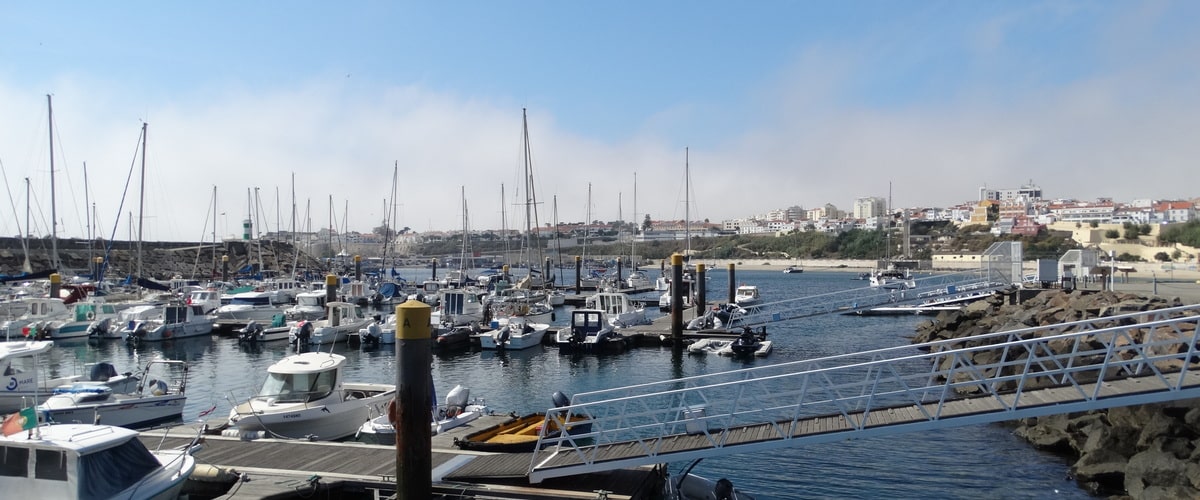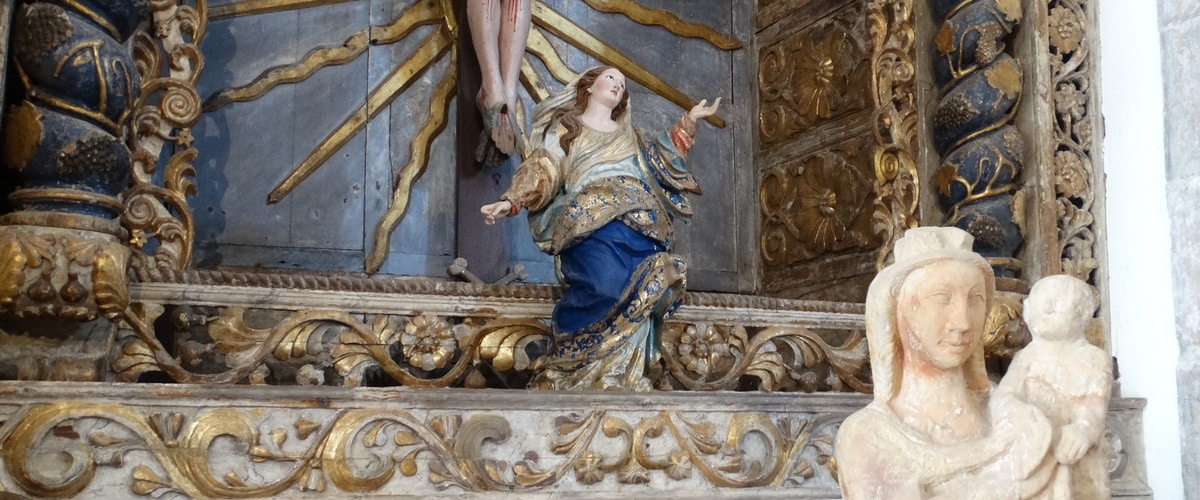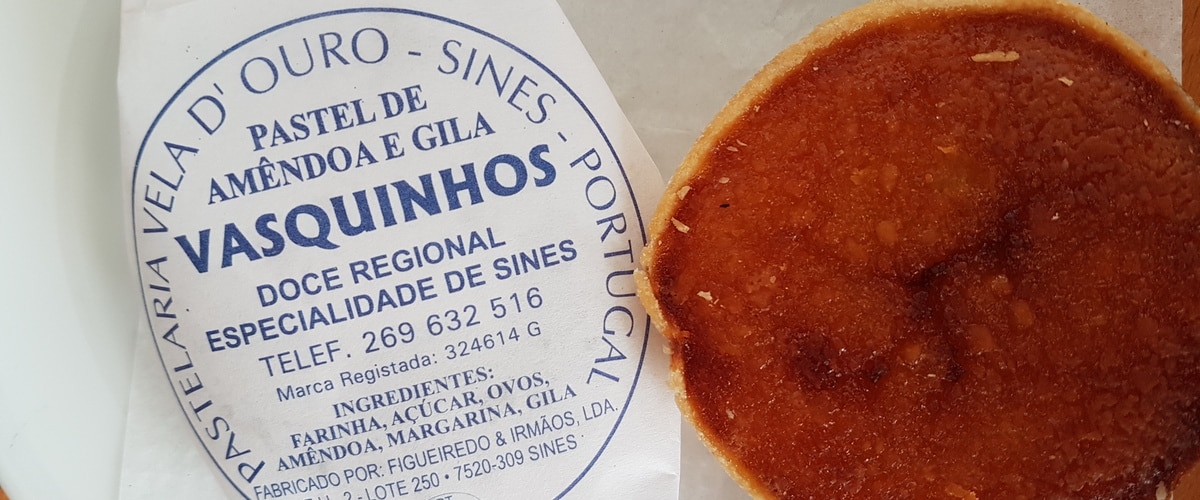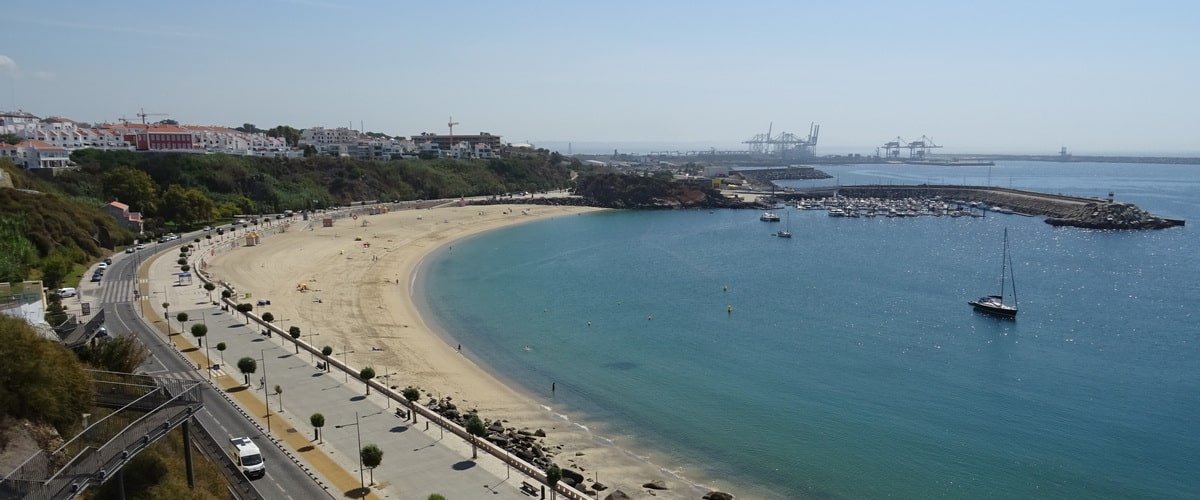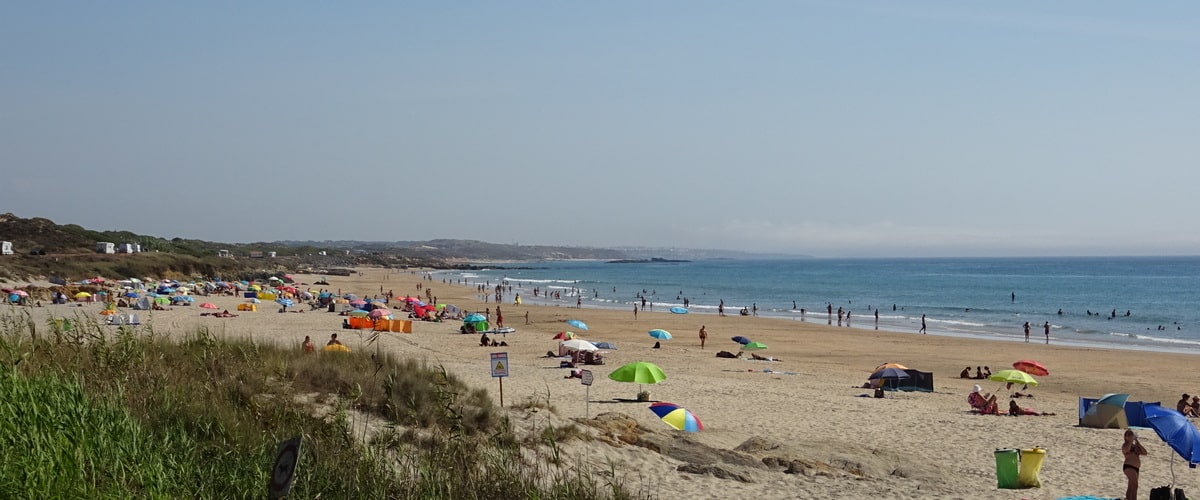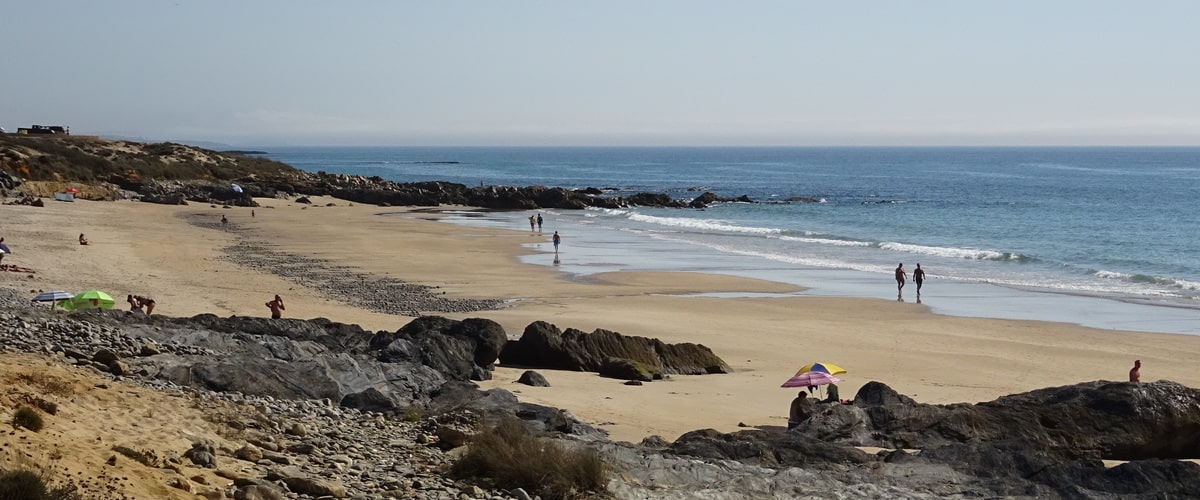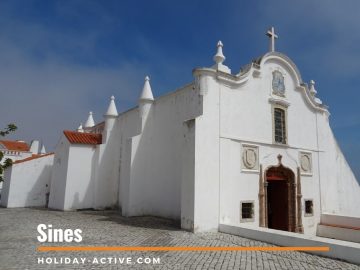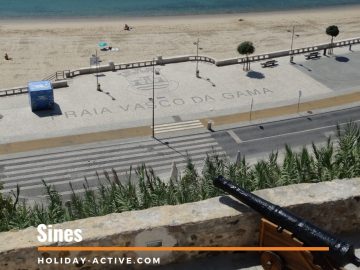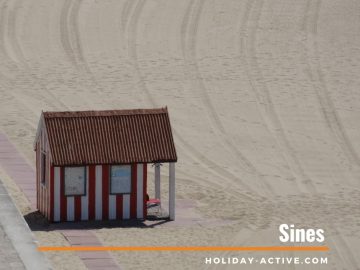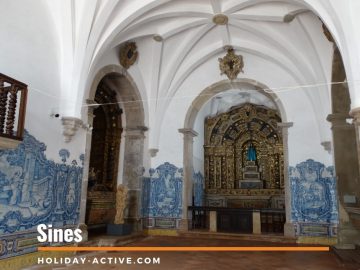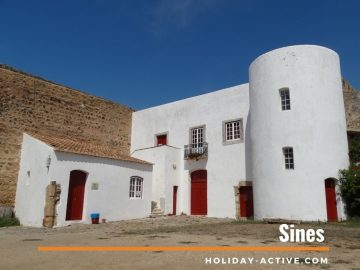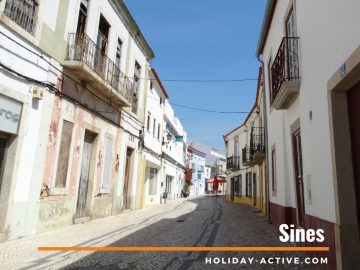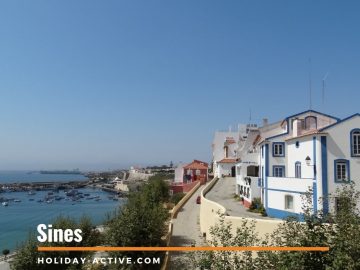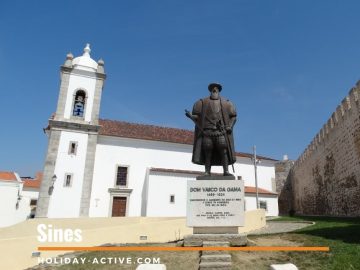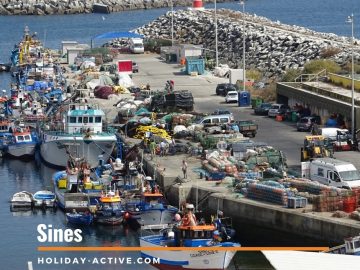Sines
About Sines
To the northeast of the Cape of Sines, in one of the rare sheltered spots along the Portuguese Alentejo coast, you will find Sines. The city has developed above a cove by the Atlantic ocean, where the sea has always played an essential role in the economy and character of its people.
Sines has had human occupation since prehistory. The word Sines comes from “sinus”, the Roman term for the bay. At the end of the 12th century, beginning of the 13th century, it was reconquered from the Moors and, in 1217, entrusted to the Knights of the Order of Santiago, based in Santiago do Cacém.
D Pedro I, in order to protect the coast, grants the charter to Sines, under the condition that a Castle be built. Which it was.
After the Évora Monte Convention, in July 1834, it was from Sines that D. Miguel boarded for exile. With Liberalism movement, the municipality no longer remained under the rule of the Order of Santiago.
Sines lived practically from fishing, the cork and canning industries until the middle of the 20th century when the tourism industry took hold. In the 1970s, in the northern part of the municipality, a port-industrial platform was built that further boosted the village’s progress.
Vasco da Gama was born in Sines, the Portuguese navigator who found the seaway to India. And it was the County of Sines, that, until the end of its life, he craved for as a reward for his prowess. Regrettably without success.
What to visit in Sines
Historic Centre
Perched upon the cliff, the houses of the Historic Center of Sines extend from the Castle to the Fort of Revelim
Sines Castle
The Castle of Sines, upon the cliff, is a relatively small medieval fortress, probably because when it was built, the village already occupied a large portion of the land.
Estêvão da Gama, Vasco da Gama’s father, was mayor of Sines Castle, which leads to the belief that the navigator was born on the second floor of the Keep. Whether it was here or at the house located on Rua Vasco da Gama, he certainly spent much of his childhood here.
Inside the Castle, displaying bright red doors, you will find the “Casa de Vasco da Gama” an exhibition that evokes the memory of the navigator through multimedia presentations that illustrate Vasco da Gama’s life and pioneering journeys, from the Africa coast to India and Asia.
At the Castle, be sure to climb the battlements to get one of the best views in the city.
Vasco da Gama Statue
The population of Sines has long wanted to erect a statue to its most celebrated son, the great navigator Vasco da Gama. However, it was only in 1970 on the fifth centenary of his birth anniversary that the statue, the work of António Luís Branco de Paiva, was erected. Today it is an emblematic symbol of the City of Sines
São Salvador Church
This Church dates back to the Middle Ages; however, because it became too small for the number of its followers, it was extensively remodelled in the early 17th century.
It was here that Vasco da Gama received in 1480 the “Prima Tonsura”. A religious ceremony in which the Bishop cuts a piece of hair from the ordinand, granting him, through this gesture the first-degree order in the Clergy. As such, Vasco da Gama became, at 11 or 12 years old, a member of the Order of Santiago.
Penedo da India Elevator
This blessed elevator connects the top of the cliff, specifically Largo dos Penedos da India, in the historic centre of the village, and Avenida Vasco da Gama, below on the river promenade. In doing so, it does save one from some steep climbing.
Church of Nossa Senhora das Salas (or Salvas)
Dona Isabel de Aragão came to Portugal to marry the king D. Dinis.
Her maid of honour, D Vetaça Lescaris, Greek princess, left for Portugal to come and serve her queen. However, when entering Portuguese waters, she was met by a tremendous storm. In dire straits, D. Vetaça promises to build a chapel in honour of the virgin at the first safe haven she finds. Consequently, she manages to dock in Sines. She fulfils her promise by erecting the Chapel of Nossa Senhora das Salvas, a little further east than the current one, above the spring that today feeds the Vetaça Fountain.
Vasco da Gama, Our Lady’s devotee, ordered the rebuilding of the Church of Nossa Senhora das Salas, in the 16th century, in appreciation for the success of his trip to India.
Despite the opposition of the Order of Santiago to Vasco da Gama’s project, the work progressed. The new church exhibits prominent Manueline features. Above the door there is an engraved stone placed by the navigator that reads: “This House of Nossa Senhora das Salas was commissioned by the very magnificent Dom Vasco da Gama, Count of Vidigueira, Admiral and Viceroy of the Indies”.
Inside, notice the gilded high altar with the image of Our Lady of Salas and the tile panels depicting the life of Our Lady.
It is said that Vasco da Gama, every time he sailed this stretch of coast, greeted with a cannon salute, Nossa Senhora das Salas, protector of all seafarers.
Revelim Fort
Built in the 17th century to, together with the Castle, defend the coast from corsairs and pirates who proliferated on the Portuguese coast
Fishing Port
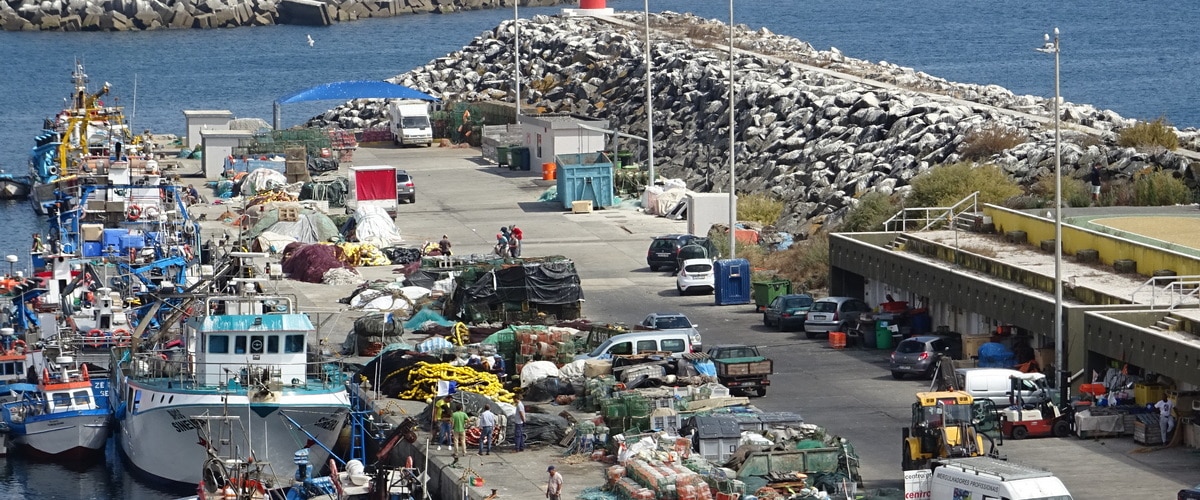
Stroll along the Vasco da Gama beach promenade and watch the fishing boats come and go much to the delight of the seagulls.
Sines Harbour
The Sines Harbour is an almost mandatory stop for those who pass by the Portuguese coast. Given the scarcity of shelter ports along the Alentejo coast, this harbour with around 230 moorings is a welcome sight for those who have been at sea for a long time.
Port Terminals
North of Sines you will find the port terminals that supply energy products (oil and oil byproducts, coal and natural gas) and the container terminal.
The Port of Sines and its industrial area with more than 2,000 ha are an international logistics platform.
Religious Feast in Sines
August 14th and 15th – Feast of Nossa Senhora das Salas, the patron saint of the seamen of Sines. The procession passes through the Historic Center of Sines on the night of August 14, ends the 15th at sea, with the trawlers all decked out.
What to taste
The typical cuisine is based on fish and seafood, always fresh ingredients that, combined with the flavours of the Alentejo countryside, produce delicious dishes such as açorda de marisco (Bread porridge with Seafood) and feijoada de búzios (Whelk bean stew).
Try the almond-based regional sweet and “O Vasquinho” sold at the cafe Vela D’Ouro
Who was Vasco da Gama
Vasco da Gama was born in 1469 in Sines, in an environment of sailors and voyages.
He studied mathematics, navigation and astronomy. When he turned 18, he had already crossed the Mediterranean and visited the city of Tanger, conquered by the Portuguese.
His father, Estêvão da Gama, had been chosen to undertake the expedition based on the route taken by Bartolomeu Dias to the Cape of Good Hope and try to reach the Indian Ocean.
An ambitious quest that had begun in 1415, during the reign of D. João I, as an alternative course to the very hostile land and Mediterranean routes used in the highly coveted commerce of spices, fabrics and precious stones
But the death of Estevão da Gama and that of D João II, in 1497, D Manuel I, who succeeded him, assigned this task to his son, Vasco da Gama, appointing him chief captain of the fleet.
So at the age of 28, Vasco da Gama commanded the most expansive ocean expedition of the time, discovering the sea route to India. It consisted of 170 men spread over four vessels: The São Gabriel, commanded by Vasco da Gama; São Rafael commanded by Paulo da Gama; Berrio delivered to Nicolau Coelho and the fourth, São Miguel, was loaded with supplies and ammunition and overseen by Gonçalo Nunes. Amidst storms, adventures and misadventures, vividly portrayed in the Lusíadas de Luís de Camões, Vasco da Gama arrived in Calicut in February 1498, paving the way for Europeans.
In August 1498, Vasco da Gama returned to Portugal with boats full of spices, fabrics and precious stones. However, a scurvy epidemic reduced its crew to 30 men and minus a ship.
In 1502 he commanded a second expedition to India, this one now with 20 vessels.
D. Manuel, in recognition of the great achievement, rewards Vasco da Gama with several titles. However, the title that the navigator ambitions is that of the Lordship of Vila de Sines, which he never received due to the opposition of the Order of Santiago
Back from his second voyage to India, Vasco da Gama dedicates himself to the construction of his Manor in Sines. D. Manuel, under pressure from the Order of Santiago or because he felt disrespected, ordered the work to be suspended and expelled Vasco da Gama and his family from Sines. However, Vasco da Gama did leave his mark on the Church of Nossa Senhora das Salas.
In 1524 Vasco da Gama was appointed Governor of India and sent back to India to replace Duarte de Menezes. Shortly after that, Vasco da Gama contracted malaria and died. He was buried in the Church of S. Francisco in Cochin, India. In 1880, his remains were transferred to the Mosteiro de Jerónimos, in Lisbon
Beaches around Sines
Vasco da Gama Beach
An urban beach adjacent to the Fishing Port. Protected by two jetties, it allows for calm and sheltered waters.
S. Torpes Beach
One of the most popular beaches in the municipality for its warm waters, as a result of the cooling waters of the Thermoelectric Power Station that flow there.
A flat and extensive beach with about 2km: it is known for providing smooth and regular waves, perfect for the introduction to surf.
A guarded beach with a surf school where you can rent surf boards or take surfing lessons. The Trinca Espinhas restaurant right on the beach offers tasty food with stunning views.
Legend has it that S. Torpes was scourged and beheaded by the Romans for having converted to Christianity. His body was placed on a raft and launched into the river in Pisa, Italy with a rooster and a dog and this way they crossed the Mediterranean. It is said that the head came to shore on this Portuguese beach and the body on the French beach of S. Tropez. The relationship between the names of these two places is evident. This legend being true, this was the site where one of Europe’s first Christian temples was built, although long since destroyed.
Morgavel Beach
The Morgavel beach is a 350m stretch of sand with clear and crystalline waters where the Morgável stream ends its course. To the south, if you go around the rocks at low tide or go up the dunes if high tide, you will find a small, sheltered beach. Although it is not an urban beach, its access is easy, with good parking.
You will find the Bom Petisco restaurant known for its fresh fish and generous portions at a fair price in front of the beach.
Sines is a small town that you can visit in a day, so it may be more interesting to book outside the town itself and relax in the beautiful Alentejo countryside or the gorgeous seashore.
Our Suggestions
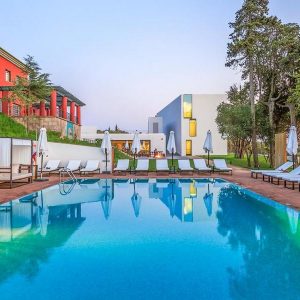
Santiago Hotel Cooking and Nature
Surrounded by the Alentejo countryside scenery and overlooking the Santiago do Cacém Castle, this 4-star hotel oozes comfort. Blending modern with a traditional twist offers spacious rooms with private balconies and an outdoor swimming pool. Santiago Hotel is a cooking hotel where the gastronomy and cooking experiences are part of the attraction.
Should you wish to leave it, besides the quaint village of Santiago do Cacém, you are 20km from breathtaking beaches.
Pets allowed
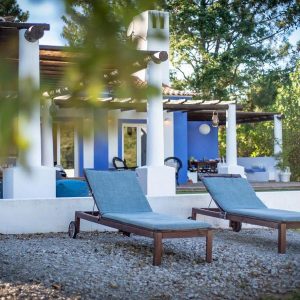
Herdade do Frei Cuco
In Santiago do Cacém, this holiday home features 3 bedrooms, 2 bathrooms, a dining area, a fully equipped kitchen, and a patio.
A property with great decoration and architecture, tranquil and pleasant outdoor space with a pool. Your own oasis amid the countryside.
Pets allowed

Reserva Alecrim Ecosuite & Glamping
In Santiago do Cacém. A wonderful and exceptional locations for those who adore nature: 32 well-kept lodges are carefully “planted” in the midst of 28 hectares, completely preserved with local fauna and flora such as cork oaks, olive and pine trees
The Eco Suites overlook the lake and are furnished with a fireplace and a wooden sundeck, the perfect place to relax, soak in the sun and stargaze at night!
With three swimming pools; a heated dome pool, a biological and an infinite pool, a sunset lounge and pizza bar, entertainments for kids and a vegetable garden.
Pets are not allowed

Monte do Giestal
Built in a traditional architectural style all villas T1 and T2 offer a well-equipped kitchen and a cosy living room with a fireplace. Other amenities include a spa and wellness centre, pool and a gym
In total, there are 10 villas, T1 and T2, with a sober decoration. Your home in the Alentejo
Pets allowed on request.

 English
English

